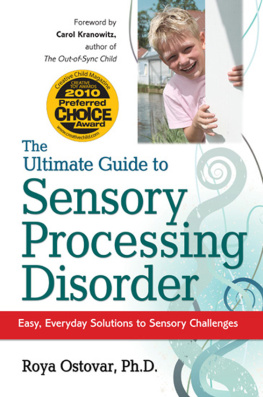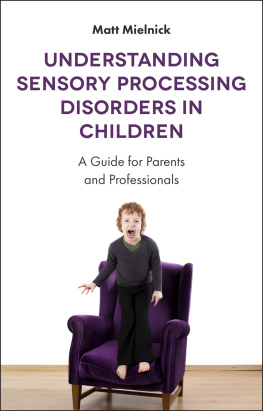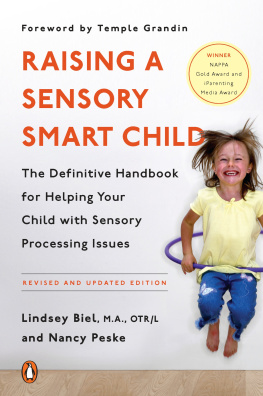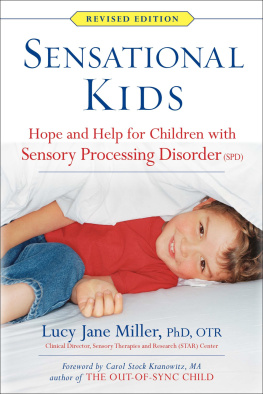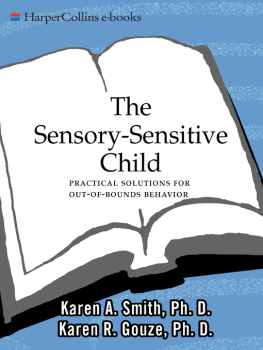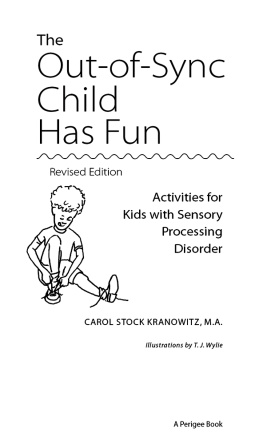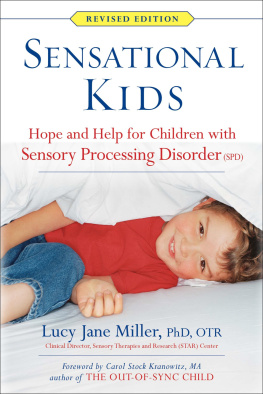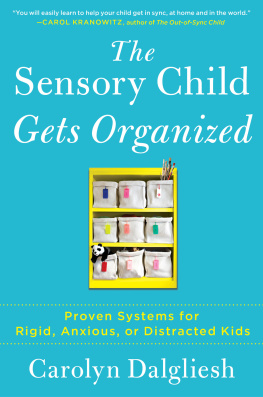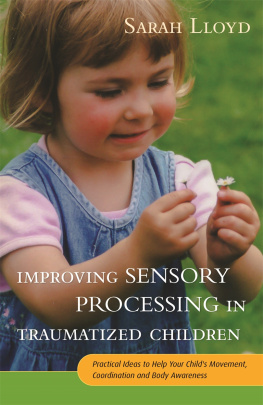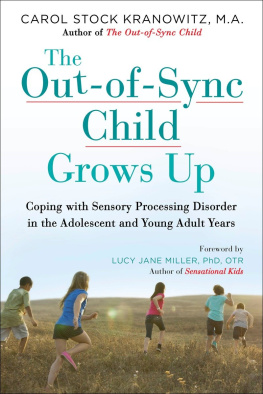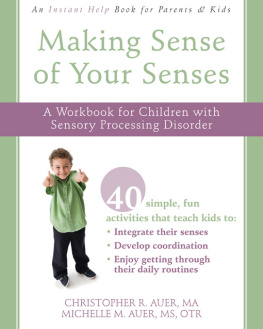who inspires me every day, who sees the true beauty in everything and everyone, who is poised, articulate, forgiving, and mature far beyond her young age and never ceases to amaze me with her incredible capacity for love, compassion, kindness, understanding, support, and humanity.
Until the 1990s, information about sensory processing disorder (SPD), also known as sensory integration dysfunction, was scarce for people who were not occupational therapists. One could have read Dr A. Jean Ayres' seminal books, including Sensory Integration and the Child, which was written in the 1970s. A search of the Internet in later years would have revealed an occasional paragraph summarizing a research article, but unless one were a dues-paying professional, the complete article was inaccessible. One might have asked an occupational therapist to sit down for several hours to explain SPD and how it affected a child or student. Otherwise, to learn the basics of SPD, one had to go to school to become an occupational therapist and take extra academic courses on the treatment of sensory disorders.
In the 1990s, something wonderful began to happen. Books and videos about SPD began to appear at bookstores. With the advent of these materials, parents, teachers, and professionals who were eager to learn about SPD were fi nally able to get their hands on publications that could be easily understood.
The authors of these helpful books were occupational therapists, researchers, psychologists, psychiatrists, physicians, speech-language pathologists, individuals who lived with SPD, and even teachers. Each publication broadcast the author's point of view from a particular vantage point and contributed valuable information to laypeople about the effects of SPD at home, at school, at work, at play, and out and about in the world.
Now, another voice with a unique perspective joins this swelling chorus of authors who write about SPD. Roya Ostovar, PhD, is a neuropsychologist who has worked with children with SPD since 1997. Roya and I met at a conference sponsored by Sensory Resources in 2007. She told me that she used my book, The Out-of-Sync Child, in her work, and that she was writing a book from a new perspective. I rejoiced at this news, as many medical and mental health professionals are still unaware of the causes and effects of sensory processing issues.
With her education, experience, compassion, and wisdom, Roya is able to spread the word about SPD not only among her colleagues, but also among the general public. She trained at the Neuropsychiatric Institute and Hospital at the University of California, Los Angeles. Today, she is a clinical instructor of psychiatry at Harvard Medical School and the director of the training and fellowship program, with direct clinical supervision of fellows, interns, residents, and other trainees interested in learning about the educational and clinical needs of children with neurodevelopmental disorders. She is also the director of the McLean Hospital's Center for Neurodevelopmental Services, or CNS, in Belmont, Massachusetts. At CNS, she runs Pathways Academy and Camp New Connections to integrate services to meet the educational, social, and developmental needs of individuals with Asperger syndrome and related learning and developmental disorders.
There's no doubt about itRoya Ostovar knows the score!
In this book, to get the reader in sync, she sings the same tune as other authors as she reviews and confirms much of what has been written. Then she goes further and helps the reader learn that SPD must be considered a form of unmitigated stress. Roya's mission is to help us understand what a child with SPD experiences on a daily basis, the effect of SPD on the child's body and systems, and the child's physical and emotional reactions in various situations.
To help us feel what it is like to have SPD, she reminds us what it feels like when we are under great stress:
Consider this example: Your heart beats fast, your palms are sweaty, your head hurts, and you can't think straight. You feel like your blood pressure has gone up (and it has), your skin feels clammy, you feel a bit shaky when you walk or stand up, your eyes and ears don't quite work the way you'd like them to, and even though you need a drink of water, you probably don't feel like getting one.
To be out of control is scary, and for those who have SPD, this loss of control can be a dailyand even hourlyscenario.
The stress of having SPD can lead to ailments and disorders in the body, mind, and spirit. It can affect the child's physical, immunological, psychological, social, emotional, and cognitive health and welfare. Roya's examples of children overwhelmed by SPD help the reader to hear the children's frustration and exhaustion. Complete case studies, including recommendations to parents, are interspersed throughout the book, and these are useful to show us how a neuropsychologist perceives a child's behavior.
One of the best features of this book is the hundreds of quick, smart strategies that all of us can use to provide on-the-spot intervention when a child is experiencing a stress-driven meltdown. Some strategies are ones that parents and teachers may already use from time to time; others are brilliant new ideasand all of them work!
Before taking the child to a religious or cultural event, for example, Roya suggests that we learn the answers to these questions:
- How many people will be there?
- What is expected of everyonesinging, silence, prayer, eating, drinking, sitting, walking, standing, clapping?
- Where will the event be held?
- When will it occur?
- How will it be managed?
- Why is your family going?
During the event, she offers other practical, instantaneous tips, including:
- If you see your child struggling, don't panic! Speak calmly and use language he is used to hearing. Now is not the time to try new techniques.
- Encourage your child to use his toys, props, or objects as supports, especially if you think it will help him get through a challenging segment of the event.
- Remember, even if your child does well during practice, the stress of the real situation could be overwhelming. Always allow for a way out.
After the event:
- Gauge how much communication your child is up for after the event. If she is exhausted or if she craves stimulation, help her address those needs provide a quiet, comforting environment in your car, or go to the playground for a few minutes before driving home.
- Ask your child how she felt at the event. Your child's feedback is part of what makes her sensory diet plan or the therapeutic exercises work.
- Whatever the outcome, don't lose sight of your child's hard work. Consider each attempt to participate in events as something to celebrate (even if it does not succeed).

